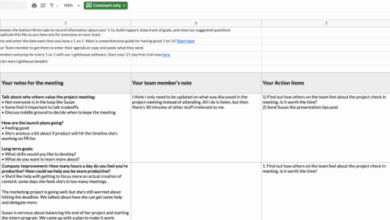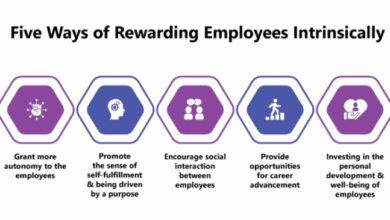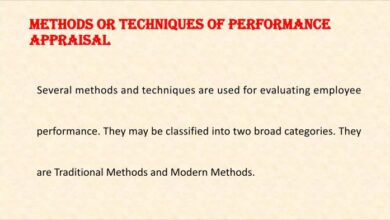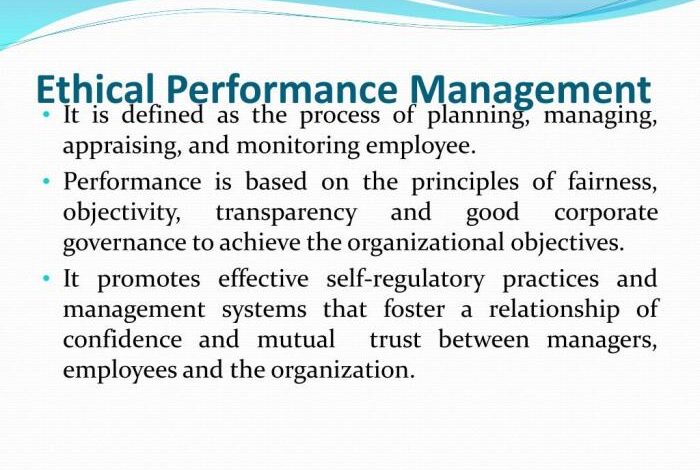
Ethics in performance management is crucial for fostering a fair and productive work environment. It’s about ensuring that evaluations, rewards, and disciplinary actions are handled with integrity and respect. This involves understanding the ethical considerations in every aspect of performance management, from defining clear expectations to addressing potential biases and safeguarding employee privacy. The framework Artikeld in this discussion examines the key principles, challenges, and solutions for implementing ethical performance management practices.
This exploration dives into the nuances of fairness and transparency in performance evaluations, delving into methods for minimizing bias and ensuring confidentiality. We’ll also examine the connection between ethical performance management and employee well-being, highlighting the importance of a supportive work environment for promoting growth and preventing burnout. Finally, we’ll consider ethical considerations surrounding performance improvement plans and disciplinary actions, as well as rewards and recognition, to provide a comprehensive understanding of the topic.
Defining Ethics in Performance Management
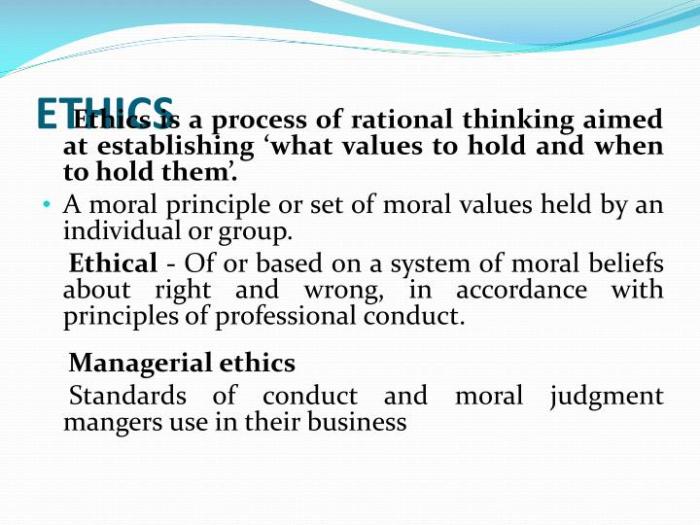
Ethical considerations are paramount in performance management, shaping not only the outcomes but also the culture and trust within an organization. A strong ethical foundation ensures fair treatment, accurate evaluations, and motivation, all of which contribute to a more productive and sustainable work environment. Effective performance management, built on ethical principles, empowers individuals and fosters a positive organizational climate.Ethical performance management is the application of moral principles and values in all aspects of performance appraisal, feedback, development, and reward systems.
It encompasses a wide range of practices, from the design of performance metrics to the delivery of constructive feedback. The focus is on fairness, transparency, and respect for individuals, ensuring that performance evaluations are objective, accurate, and contribute to the overall well-being of employees and the organization.
Key Principles of Ethical Performance Management
Ethical performance management is grounded in several fundamental principles. These principles guide decision-making and ensure fairness, transparency, and respect in the evaluation and development process.
- Fairness: All employees should be treated equally and receive evaluations based on consistent standards. Bias, favoritism, and discrimination should be actively avoided in every stage of performance management. For example, a manager should not evaluate an employee based on personal preferences or stereotypes but rather on demonstrable performance against clearly defined goals.
- Transparency: Performance expectations, evaluation criteria, and feedback processes should be clearly communicated to employees. Open communication and access to information are vital for fostering trust and understanding. This includes clear communication of performance goals and metrics, as well as the criteria for evaluation and improvement.
- Respect: Employees should be treated with dignity and respect throughout the performance management process. Constructive criticism should be delivered in a supportive and professional manner, focusing on behaviors and performance rather than personal attacks.
- Objectivity: Performance evaluations should be based on observable behaviors and quantifiable results, rather than subjective opinions or personal biases. Clear, measurable goals and performance metrics are crucial for objective assessments.
Ethical Dilemmas in Performance Management
Performance management often presents complex ethical dilemmas. These situations require careful consideration and a commitment to ethical principles.
- Conflicting Interests: Managers may face situations where their personal interests conflict with the needs of their employees or the organization. For example, a manager might be pressured to give favorable reviews to employees who are crucial to a project, even if their performance does not meet expectations. This situation requires the manager to prioritize ethical conduct over personal or organizational pressures.
- Bias and Discrimination: Unconscious biases can affect performance evaluations, leading to unfair or discriminatory outcomes. Managers need to be aware of their own biases and actively work to ensure that evaluations are objective and fair. Examples include gender bias, racial bias, or ageism.
- Confidentiality Concerns: Performance discussions and feedback should be handled with confidentiality. Sharing sensitive information with unauthorized parties can damage employee trust and create a hostile work environment. Breaching confidentiality is a serious ethical breach.
Importance of Ethical Decision-Making
Ethical decision-making in performance management is crucial for maintaining a positive work environment, promoting employee engagement, and achieving organizational goals.
- Building Trust: Ethical performance management practices build trust between employees and managers. Employees feel valued and respected when they are treated fairly and transparently.
- Enhancing Motivation: Employees who feel valued and supported are more likely to be motivated and engaged. Ethical performance management practices contribute to a positive work environment that fosters motivation and commitment.
- Promoting Organizational Success: Ethical performance management fosters a culture of accountability and responsibility, which ultimately contributes to organizational success. Fair and accurate evaluations lead to better decision-making and more effective resource allocation.
Framework for Evaluating Ethical Implications
A framework for evaluating the ethical implications of performance management actions can guide decision-making in complex situations.
- Identify the Issue: Clearly define the ethical dilemma or situation requiring evaluation. This involves identifying the conflicting values or principles at play.
- Gather Information: Collect all relevant information about the situation, including the context, potential impacts, and involved parties. This includes reviewing company policies and procedures related to performance management.
- Consider Alternative Solutions: Explore different courses of action and their potential consequences. This involves weighing the potential benefits and harms of each option.
- Evaluate Ethical Principles: Apply ethical principles like fairness, transparency, and respect to each alternative solution. Consider how each option aligns with the organization’s ethical standards and legal requirements.
- Make a Decision: Choose the solution that best balances the ethical principles and the organizational needs. Document the decision-making process for future reference.
Fairness and Transparency in Performance Evaluations: Ethics In Performance Management
Performance evaluations are critical for employee growth and organizational success. However, these assessments can be susceptible to biases and inconsistencies, undermining their effectiveness and fairness. Ensuring fairness and transparency in performance evaluations is paramount for creating a positive and productive work environment. A robust system encourages employee engagement and fosters a culture of trust.Fair performance appraisal systems are crucial for evaluating employee contributions accurately and fostering a positive work environment.
Subjectivity and biases can significantly impact the objectivity of evaluations, potentially leading to misrepresentation of employee performance and demotivation. This necessitates a commitment to clear criteria and transparent processes.
Ethical performance management isn’t just about hitting targets; it’s about fostering a supportive environment where everyone thrives. This involves understanding the importance of a healthy work-life balance, which is crucial for employee well-being and productivity. Learning strategies like those outlined in balancing act work life and learning strategies for success can significantly improve outcomes. Ultimately, ethical performance management requires a thoughtful approach that considers the whole person, leading to a more successful and fulfilling workplace for all.
Factors Compromising Fairness in Performance Evaluations
Several factors can compromise the fairness of performance evaluations. Unclear performance expectations, inconsistent application of standards, and personal biases from evaluators are common issues. These issues can lead to inaccurate assessments and hinder the development of employees. The lack of a standardized process can also result in significant discrepancies in how performance is evaluated across different departments or individuals.
Methods for Ensuring Transparency in Performance Reviews
Ensuring transparency in performance reviews is crucial for maintaining fairness and accountability. Different methods can contribute to transparency, fostering trust and understanding. Clear communication of performance expectations is a cornerstone of a fair system. These expectations should be documented, readily accessible, and consistently applied across the organization.
Role of Clear Performance Expectations and Criteria
Clear performance expectations and criteria are fundamental to ensuring fairness in performance evaluations. These criteria should be measurable, specific, achievable, relevant, and time-bound (SMART). This framework provides a standardized basis for evaluating performance, minimizing subjective interpretations and promoting a more equitable process. Well-defined criteria ensure that employees understand the standards they need to meet.
Methods for Ensuring Fairness and Transparency in Performance Evaluations, Ethics in performance management
| Method | Description | Advantages | Disadvantages |
|---|---|---|---|
| Clear Performance Standards | Developing specific, measurable, achievable, relevant, and time-bound (SMART) criteria for performance. | Provides a consistent framework for evaluation, reduces subjectivity, and ensures employees understand expectations. | Requires significant effort in development and can be complex to create for diverse roles. |
| Regular Feedback and Check-ins | Implementing regular performance discussions to provide ongoing feedback and address concerns promptly. | Facilitates early identification of performance issues and allows for course correction. Encourages continuous improvement. | Requires dedicated time and effort from both managers and employees, which can be challenging in busy environments. |
| 360-degree Feedback | Collecting performance feedback from multiple sources, including peers, subordinates, and supervisors. | Provides a comprehensive view of performance, reduces bias from a single source, and allows for a holistic perspective. | Can be time-consuming to implement and may involve challenges in coordinating feedback from multiple sources. Requires careful consideration of the weight given to different feedback sources. |
| Performance Review Training for Evaluators | Providing training for managers and evaluators on effective performance evaluation techniques, including bias awareness and objective assessment methods. | Reduces biases and enhances the objectivity of evaluations. Improves consistency in application of standards. | Requires significant time investment for training and may not completely eliminate biases if not properly addressed. Requires continuous training to ensure ongoing improvement. |
Bias and Discrimination in Performance Management
Performance evaluations should be objective and fair, reflecting an employee’s actual contributions and performance. However, unconscious biases can significantly skew these assessments, leading to inaccurate judgments and potentially discriminatory outcomes. Understanding these biases is crucial for creating a more equitable and effective performance management system.Unconscious biases, often rooted in societal stereotypes and personal experiences, can influence our perceptions and judgments without our awareness.
These biases can manifest in various ways during performance evaluations, potentially leading to unfair or discriminatory outcomes. Addressing these biases requires a conscious effort to recognize and mitigate their impact on the evaluation process.
Types of Biases in Performance Evaluations
Various biases can affect performance evaluations, often subtly and unconsciously. Recognizing these biases is the first step towards creating a fairer system.
- Confirmation Bias: Evaluators tend to seek out and interpret information that confirms their existing beliefs or expectations about an employee. For instance, if a manager expects a particular employee to underperform, they might be more likely to notice and emphasize instances that support this belief, even if other evidence suggests otherwise.
- Halo Effect: A positive or negative impression in one area of performance can influence the evaluation of other areas. For example, if a manager has a positive impression of an employee’s work ethic, they might also rate them highly in other areas, regardless of their actual performance in those areas. Conversely, a negative impression in one area can negatively color the entire evaluation.
Ethical performance management isn’t just about hitting targets; it’s about fairness and respect. Thinking about how you can best support your team, like adding a solar panel to keep your backup battery topped up add a solar panel to keep your backup battery topped up , can be a great way to show you’re invested in their success.
Ultimately, it’s about creating a supportive environment where everyone can thrive and perform at their best.
- Similarity Bias: Evaluators tend to favor employees who are similar to them in terms of background, experience, or personal characteristics. This bias can lead to overlooking the contributions of employees who differ from the evaluator in these areas.
- Gender Bias: Stereotypical assumptions about gender roles can influence evaluations. For example, a female employee might be judged less favorably for assertive behavior, which might be perceived as unfeminine, while similar behavior from a male employee might be seen as a positive trait.
- Age Bias: Evaluators might unconsciously associate certain traits with age. For example, a manager might perceive an older employee as less adaptable to new technologies, even if their performance is not diminished by this factor.
Examples of Bias in Practice
Bias can manifest in various ways within performance management practices.
- Selective Observation: A manager might only notice and document instances of a specific employee’s errors, while overlooking their successes, because of a pre-existing perception.
- Unequal weighting of criteria: A manager might place disproportionate emphasis on certain performance criteria that are more aligned with their personal biases. For example, a manager who values a particular project management methodology might weight projects using that method higher, regardless of their actual efficiency.
- Differential treatment in feedback: Constructive feedback may be more frequent and critical for certain employees, while others may receive less detailed feedback, even if their performance warrants it.
Strategies for Mitigating Bias
Implementing specific strategies can help mitigate the impact of bias in performance appraisals.
- Establishing clear and objective performance standards: Defining specific, measurable, achievable, relevant, and time-bound (SMART) goals can provide a consistent framework for evaluation, reducing the opportunity for subjective interpretations.
- Training evaluators on bias awareness: Workshops and training sessions can help managers recognize and understand their own biases and the impact they can have on performance evaluations. This helps to create awareness and understanding.
- Utilizing multiple raters: Involving multiple individuals in the evaluation process can provide a more comprehensive and balanced view of an employee’s performance.
- Encouraging anonymous feedback: Anonymous feedback can help to reduce the influence of personal relationships and biases on the evaluation process.
- Regularly reviewing and updating performance evaluation systems: Ensuring the system remains fair, relevant, and effective is essential for reducing bias and maintaining equity.
Legal and Ethical Implications
Bias in performance management can have serious legal and ethical implications.
Unfair evaluations can lead to discrimination claims and legal challenges, as well as damaging the company’s reputation.
Unethical evaluations can undermine trust and create a toxic work environment, which negatively impacts employee morale and productivity.
Table of Common Biases and Mitigation Strategies
Confidentiality and Privacy in Performance Data
Protecting employee privacy and maintaining confidentiality are paramount in performance management. Transparency and trust are essential for a productive work environment. Employees need to feel confident that their performance data is handled responsibly and securely, and that sensitive information isn’t misused or disclosed inappropriately. Robust policies and practices are crucial to ensure this trust and maintain a positive employer-employee relationship.Maintaining confidentiality in performance data goes beyond simply avoiding breaches.
It reflects a commitment to ethical conduct and fosters a culture of respect within the organization. Data security isn’t just about avoiding legal trouble; it’s about upholding the dignity and well-being of every employee. By implementing strong confidentiality measures, organizations can build a more trusting and productive work environment.
Ethical performance management is crucial for a healthy work environment. Companies need to ensure fair and transparent evaluations, focusing on constructive feedback and individual growth. This directly impacts employee morale and productivity. Fortunately, companies like Trend Micro are also adapting to the changing security landscape. Their recent rejiggering of small business SaaS security, as detailed in this article trend micro rejiggers small biz saas security , highlights the importance of staying ahead of the curve.
Ultimately, ethical practices in performance management, like those that prioritize fair evaluation and employee growth, are key to a successful and sustainable business model.
Importance of Confidentiality in Handling Performance Data
Maintaining confidentiality in performance data is critical for several reasons. It safeguards employee privacy, fosters trust between employees and the organization, and prevents potential legal issues. Employees are more likely to be honest and forthcoming in their self-assessments and feedback if they know their data will be handled with discretion. This, in turn, leads to more accurate and constructive performance evaluations.
Potential Risks to Confidentiality in Performance Management
Several risks threaten the confidentiality of performance data. Unauthorized access to systems containing sensitive information can lead to data breaches. Poorly managed storage or disposal of documents containing performance evaluations, or even the sharing of information in casual conversations can compromise confidentiality. Failure to comply with data privacy regulations can also expose the organization to legal action and reputational damage.
Insufficient training of employees on data protection policies can also lead to unintentional breaches.
Best Practices for Protecting Employee Privacy
Protecting employee privacy requires a multifaceted approach. Robust access controls and secure storage systems are essential for preventing unauthorized access. Strict adherence to data retention policies and secure disposal methods are necessary to limit potential risks. Clear communication of privacy policies and procedures to all employees and stakeholders is paramount. Regular training on data privacy and security awareness is essential to ensure that all employees understand and adhere to the policies.
Implementing strong authentication measures, like multi-factor authentication, is critical to preventing unauthorized access to sensitive data.
Legal and Regulatory Requirements for Data Privacy in Performance Management
Legal and regulatory requirements for data privacy vary by jurisdiction. Organizations must comply with applicable laws and regulations, such as GDPR (General Data Protection Regulation) in Europe, CCPA (California Consumer Privacy Act) in the US, and similar laws in other regions. These regulations often require organizations to obtain explicit consent for data collection, provide transparency about data usage, and implement appropriate security measures to protect personal data.
It’s essential to consult legal experts to ensure compliance with relevant laws and regulations.
Safeguarding Performance Data While Respecting Employee Privacy
Performance Management and Employee Well-being
Performance management is a crucial aspect of any successful organization. However, it’s not just about achieving targets and metrics; it’s fundamentally intertwined with the well-being of employees. A system that prioritizes fairness, transparency, and employee growth can foster a positive and productive work environment. Conversely, unethical practices can have devastating consequences for employee morale and mental health.
This section delves into the critical link between ethical performance management and employee well-being.A strong connection exists between ethical performance management and employee well-being. When performance reviews are conducted fairly and transparently, employees feel valued and understood. This fosters a sense of trust and respect, which is essential for a healthy work environment. Conversely, unfair or biased practices erode trust, leading to stress, anxiety, and decreased job satisfaction.
The Negative Impact of Unethical Performance Management
Unethical performance management practices can significantly harm employee morale and mental health. For instance, if employees perceive that evaluations are inconsistent or based on subjective biases, they may experience feelings of injustice and resentment. This can manifest as decreased motivation, increased absenteeism, and even a decline in overall productivity. Moreover, the constant pressure of potentially unfair assessments can lead to increased stress and anxiety, ultimately impacting employee well-being.
Strategies for Fostering a Supportive and Respectful Work Environment
Creating a supportive and respectful work environment is paramount to employee well-being. Regular communication, active listening, and open dialogue are crucial elements. This includes providing opportunities for feedback from both employees and managers. Establishing clear expectations and performance standards from the outset, along with consistent application of those standards, is also vital. Additionally, regular check-ins and support systems can help address any concerns or challenges employees might face.
Using Performance Management to Promote Employee Growth and Development
Performance management should be a tool for employee growth and development, not just a mechanism for evaluating past performance. This involves setting clear goals and providing ongoing support and resources for employees to achieve those goals. Managers should actively seek opportunities to mentor and coach their teams, fostering a learning environment where employees can improve their skills and knowledge.
By focusing on growth, performance management becomes a collaborative effort between employees and managers, leading to greater employee engagement and satisfaction.
Preventing Burnout and Promoting Work-Life Balance
Performance management should also account for the need to prevent burnout and promote work-life balance. This involves recognizing that employees have lives outside of work and setting realistic expectations regarding workload and deadlines. Flexible work arrangements, when feasible, can greatly contribute to work-life balance. Encouraging employees to take breaks and prioritize their well-being can significantly reduce stress and burnout.
Additionally, offering resources and support for managing stress and promoting work-life integration can significantly enhance employee well-being and retention. A culture that values employee well-being, while still demanding quality performance, is a sustainable and successful culture.
Performance Improvement Plans and Disciplinary Actions
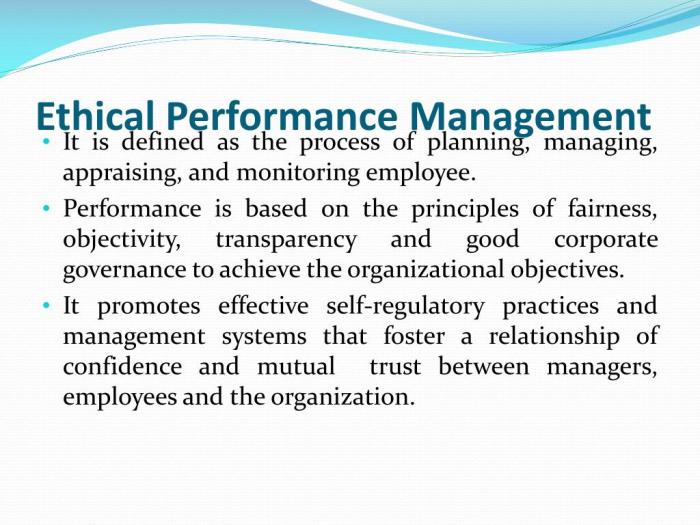
Performance improvement plans (PIPs) and disciplinary actions are crucial components of any ethical performance management system. They provide a structured framework for addressing underperformance and unacceptable conduct, ensuring fairness and consistency while upholding employee rights. However, navigating these processes requires careful consideration of ethical principles to maintain a positive and productive work environment. This section will explore the ethical considerations, processes, and approaches involved.Implementing PIPs and disciplinary actions ethically necessitates a commitment to fairness, transparency, and due process.
The process should be clearly defined, consistently applied, and supported by documented evidence. By adhering to ethical guidelines, organizations can foster trust and maintain a respectful atmosphere.
Ethical Considerations Surrounding Performance Improvement Plans (PIPs)
PIPs should be designed to support employee development and improvement, not simply to document shortcomings. A key ethical consideration is ensuring the plan is tailored to the specific employee’s needs and circumstances. It must include clearly defined expectations, measurable goals, and a realistic timeline for improvement. The plan should also Artikel support resources available to the employee, fostering a collaborative approach.
Process for Creating and Implementing Ethical PIPs
A well-structured PIP process starts with a thorough investigation into the performance issue. This involves gathering evidence, documenting observations, and considering extenuating circumstances. The employee should be formally notified of the performance concerns and provided with a copy of the documented evidence. Open communication and a supportive environment are crucial during the PIP process. The plan should be reviewed regularly to assess progress and make adjustments as needed.
The employee should have the opportunity to voice concerns and contribute to the plan’s development.
Ensuring Fairness and Due Process in Disciplinary Actions
Fairness and due process are paramount in disciplinary actions. A clear and transparent process must be in place to ensure all employees are treated equitably. This involves providing written notification of the alleged misconduct, outlining the specific rules violated, and allowing the employee to present their side of the story. Disciplinary actions should be proportionate to the severity of the offense, consistent with past disciplinary actions, and based on documented evidence.
Examples of Ensuring Fairness and Due Process in Disciplinary Actions
- Formal written warnings: Should clearly state the violation, the consequences for repetition, and the expectation of improvement. The employee should receive a copy and sign to acknowledge receipt.
- Disciplinary hearings: If the violation is significant, a formal hearing with a neutral third party should be held to allow the employee to present their case and address concerns.
- Documentation of all interactions: Maintaining detailed records of meetings, warnings, and performance reviews helps to ensure consistency and fairness.
Different Approaches to Addressing Performance Issues Ethically
Various approaches exist for addressing performance issues ethically. A coaching approach focuses on identifying the root causes of the issue and providing support to improve performance. A disciplinary approach, on the other hand, may be necessary for more serious violations or persistent underperformance. Both approaches should be applied consistently and fairly, prioritizing the employee’s development and the organization’s needs.
Role of Communication and Support in the Performance Improvement Process
Open and honest communication is critical throughout the performance improvement process. Regular feedback, both positive and constructive, should be provided to the employee. The organization should offer resources and support to help the employee improve. This might include training programs, mentorship opportunities, or access to relevant expertise. The employee should feel heard and supported, fostering a collaborative environment.
Ethical Considerations in Performance Rewards and Recognition
Rewarding high performance is crucial for motivating employees and fostering a productive work environment. However, the process of distributing rewards must be meticulously managed to ensure fairness, transparency, and ethical conduct. A well-structured reward system can significantly boost employee morale and commitment, while a flawed one can lead to resentment and distrust.Fair and transparent reward systems build trust and motivate employees to strive for excellence.
This trust is a cornerstone of a strong and productive workplace culture. By establishing a clear and equitable reward structure, organizations demonstrate their commitment to recognizing and valuing employee contributions.
Fairness and Transparency in Reward Systems
Reward systems should be transparent, clearly outlining the criteria for recognition and the process for awarding rewards. Employees need to understand how their performance is assessed and how rewards are distributed. This clarity prevents misunderstandings and fosters a sense of fairness. A well-defined system minimizes opportunities for bias and ensures that rewards reflect actual performance, not subjective opinions.
Avoiding Bias in Performance-Based Rewards
Bias in performance-based rewards can significantly impact employee morale and create a sense of inequity. To mitigate bias, organizations should implement objective performance metrics. These metrics should be clearly defined, measurable, and relevant to the employee’s role and the overall organizational goals. Regularly reviewing and updating these metrics ensures their continued relevance and alignment with current business needs.
- Establish clear, measurable, and objective performance criteria. These should be specific and quantifiable to minimize subjectivity.
- Utilize multiple evaluation methods. Employing a variety of methods, such as peer reviews, self-assessments, and manager evaluations, can help to provide a more comprehensive view of performance and reduce reliance on a single perspective.
- Conduct regular training for managers on recognizing and mitigating bias in performance evaluations. Training programs should emphasize the importance of objectivity and fairness in the evaluation process.
- Use data analysis tools to identify potential biases in reward distribution patterns. By examining historical data, organizations can detect trends and patterns that might suggest bias and take corrective action.
Effective Use of Recognition to Motivate Employees Ethically
Recognition is a powerful tool for motivating employees. When implemented ethically, it can foster a sense of value and encourage continued high performance. Recognizing achievements, big or small, can boost employee morale and reinforce positive behaviors. Public acknowledgement and appreciation can create a culture of recognition within the organization, where employees feel valued and appreciated for their contributions.
- Recognize both individual and team achievements. Celebrating both individual accomplishments and team efforts fosters collaboration and a sense of shared success.
- Focus on the impact of performance on the organization. Connecting recognition to tangible results and organizational goals demonstrates the value of individual contributions to the overall success of the company.
- Offer a variety of recognition options. Providing different forms of recognition, such as public praise, awards, or opportunities for professional development, allows for a personalized approach to appreciation.
- Ensure recognition is timely and specific. Promptly acknowledging achievements, along with a specific description of what was recognized, strengthens the link between performance and reward.
Potential Ethical Dilemmas Related to Performance-Based Incentives
Performance-based incentives, while potentially motivating, can present ethical dilemmas. For example, excessive emphasis on individual rewards may discourage collaboration and teamwork. Incentives that are too narrowly focused might not align with broader organizational goals.
- Potential for fostering a competitive rather than collaborative work environment. An overemphasis on individual rewards can sometimes hinder teamwork and collaboration. Incentivizing individuals over teams may inadvertently create an atmosphere where employees are more focused on personal gains than collective achievements.
- Risk of rewarding unethical behavior. If the incentive structure isn’t carefully designed, there’s a risk of rewarding behaviors that are not in line with organizational values, such as cutting corners to meet targets.
- Creating inequities within the organization. Incentive systems should be designed to fairly compensate employees based on their contribution. If not, it can create feelings of inequity among team members, which may lead to resentment.
Reward Systems Alignment with Organizational Values
Reward systems should be designed to reflect and reinforce organizational values. Aligning rewards with the organization’s mission and vision demonstrates commitment to the values and principles that guide the company.
- Establish a clear link between individual performance and organizational goals. This link ensures that rewards are not solely focused on individual gains but also on contributing to the broader organizational success.
- Integrate ethical considerations into the reward design process. This ensures that the reward structure aligns with the organization’s values and avoids rewarding unethical behavior.
Concluding Remarks
In conclusion, ethical performance management is not just a set of rules; it’s a commitment to creating a workplace where individuals feel valued, respected, and empowered. By prioritizing fairness, transparency, and confidentiality, organizations can cultivate a culture of trust and accountability. This discussion has highlighted the importance of consistently applying ethical principles to every aspect of performance management, from the initial setting of expectations to the final evaluation of results.
Ultimately, ethical practices in performance management benefit both employees and the organization as a whole.

